Chapter: Plant Biochemistry: The Calvin cycle catalyzes photosynthetic CO2 assimilation
Besides the reductive pentose phosphate pathway there is also an oxidative pentose phosphate pathway
Besides the reductive pentose phosphate pathway there is also an oxidative pentose phosphate pathway
Besides the reductive pentose phosphate pathway discussed in the preced ing section, the chloroplasts also contain the enzymes of an oxidative pen tose phosphate pathway. This pathway, which occurs both in the plant and animal kingdoms, oxidizes an hexose phosphate to a pentose phosphate with the release of one molecule of CO2. This pathway provides NADPH as “high pressure hydrogen” for biosynthetic processes (Fig. 6.21). Glucose 6-phosphate is first oxidized by glucose 6-phosphate dehydrogenase to 6-phosphogluconolactone (Fig. 6.22). This reaction is highly exergonic and therefore not reversible. 6-Phosphogluconolactone, an intramolecular ester, is hydrolyzed by lactonase. The gluconate 6-phosphate thus synthesized is oxidized to ribulose 5-phosphate by the enzyme gluconate 6-phosphate dehydrogenase. In this reaction, CO2 is released and NADPH is produced.
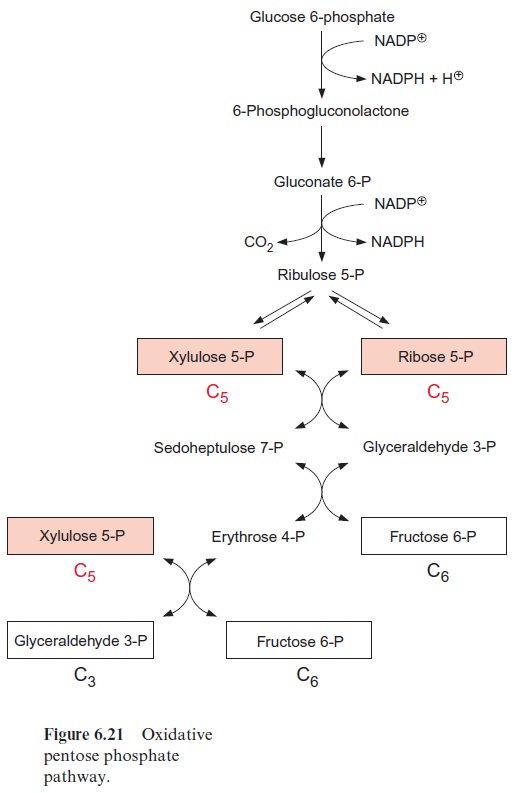
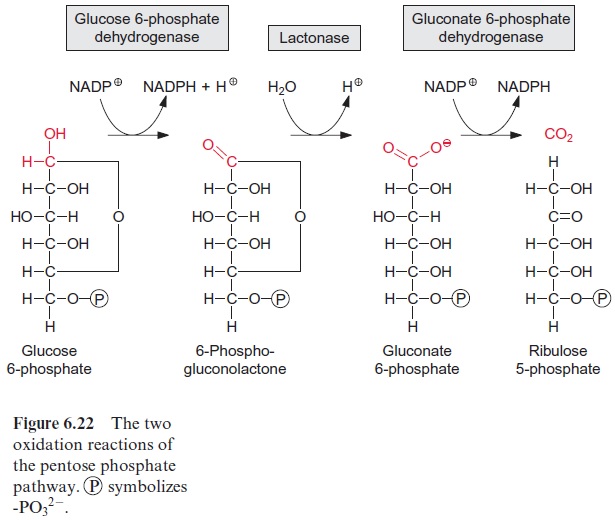
In the oxidative pathway, xylulose 5-phosphate and ribose 5-phosphate are isomerized from ribulose 5-phosphate by ribulose phosphate epimerase and ribose phosphate isomerase, respectively. These two products are then converted by transketolase to sedoheptulose 7-phosphate and glyceraldehydes 3-phosphate. This transketolase is TPP-dependent and transfers a C2 moiety (seeFigs. 6.17, 5.4 and 5.5A). This reaction sequence is a reversal of the reduc tive pentose phosphate pathway. The next reaction is a special feature of the oxidative pathway: transaldolase transfers a nonphosphorylated C3 moiety from sedoheptulose 7-phosphate to glyceraldehyde 3-phosphate, synthesiz ing fructose 6-phosphate and erythrose 4-phosphate (Fig. 6.23). The reaction mechanism is basically the same as in the aldolase reaction (Fig. 6.13), the only difference is that after the cleavage of the C-C bond, the remaining C3 moiety continues to be bound to the enzyme via a Schiff base, until it is trans ferred. Erythrose 4-phosphate reacts with another xylulose 5-phosphate via a transketolase reaction to synthesize glyceraldehyde 3-phosphate and fructose 6-phosphate. In this way two hexose phosphates and one triose phosphate are formed from three pentose phosphates:
3 C5 P ←→ 2 C6 P + 1 C3 P
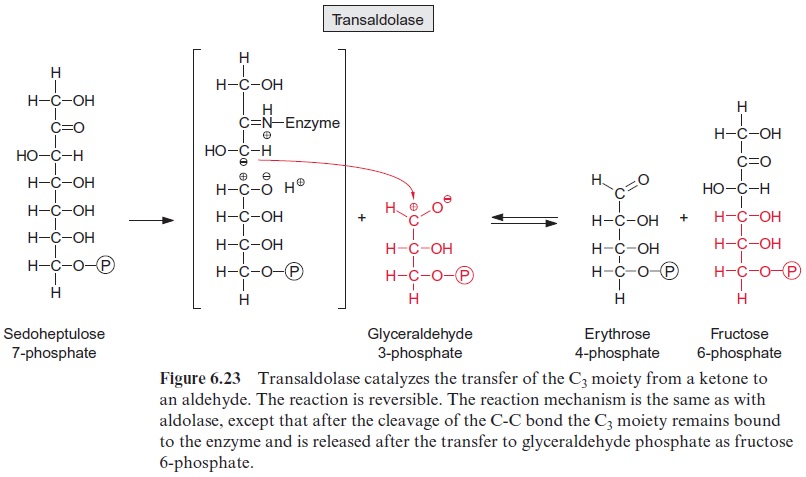
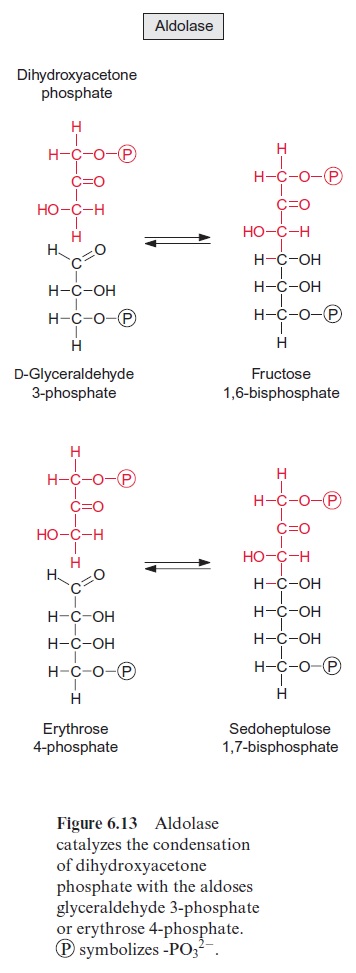
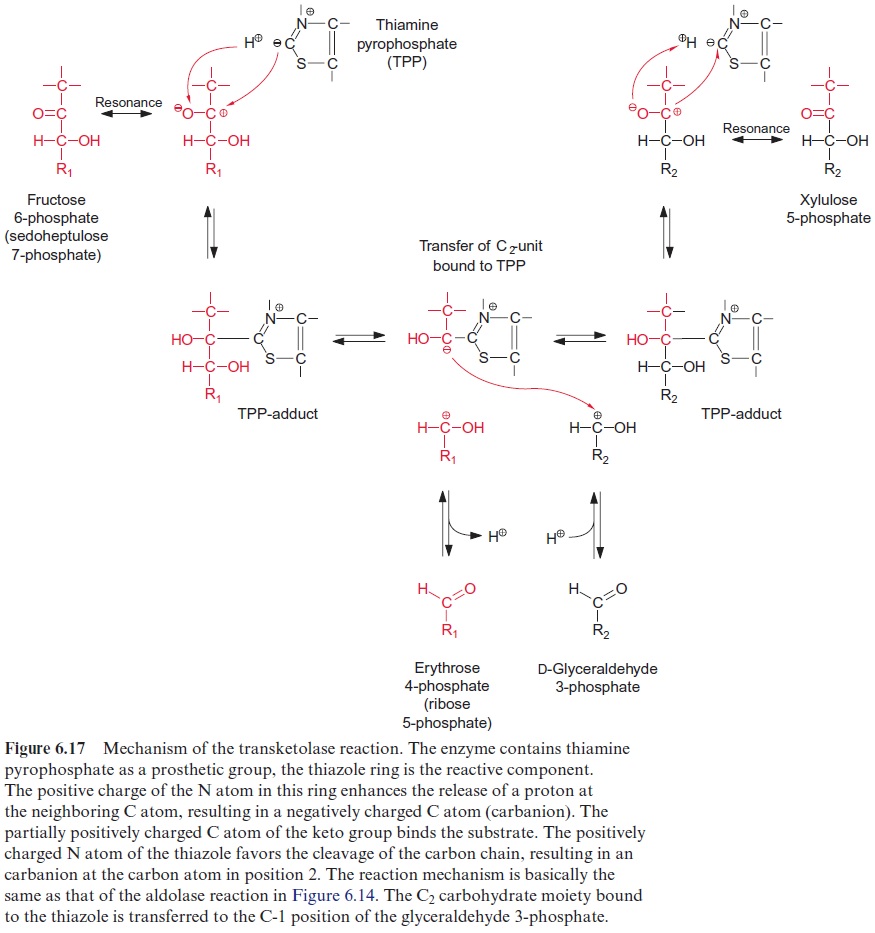
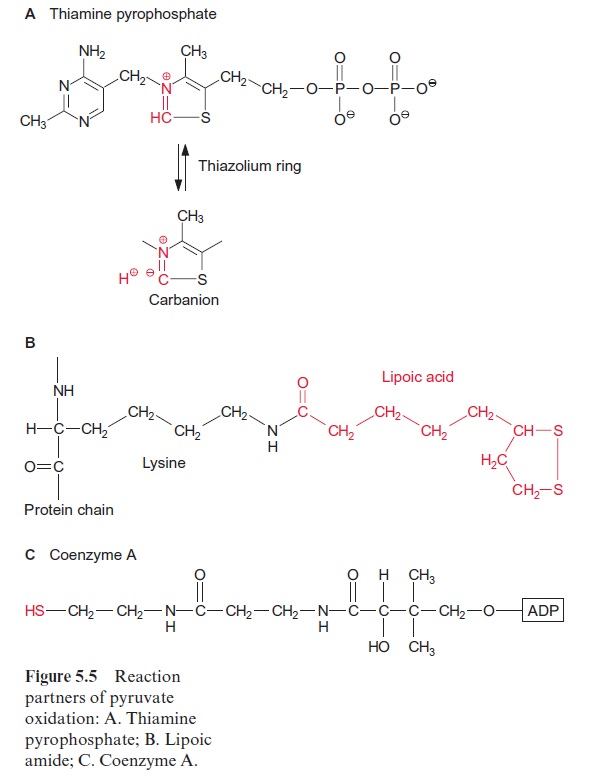
This chain of reactions is reversible. It allows the cell to provide ribose 5-phosphate for nucleotide biosynthesis even when no NADPH is required.
In the oxidative pathway, two molecules of NADPH are gained from the oxidation of glucose 6-phosphate and the release of one molecule of CO2, whereas in the reductive pathway the fixation of one molecule of CO2 requires not only two molecules of NADPH but also three molecules of ATP (Fig. 6.24). With the expenditure of energy it is possible for the reductive pentose phosphate pathway to proceed with a very high flux rate in the opposite direction to the oxidative pathway.

Related Topics